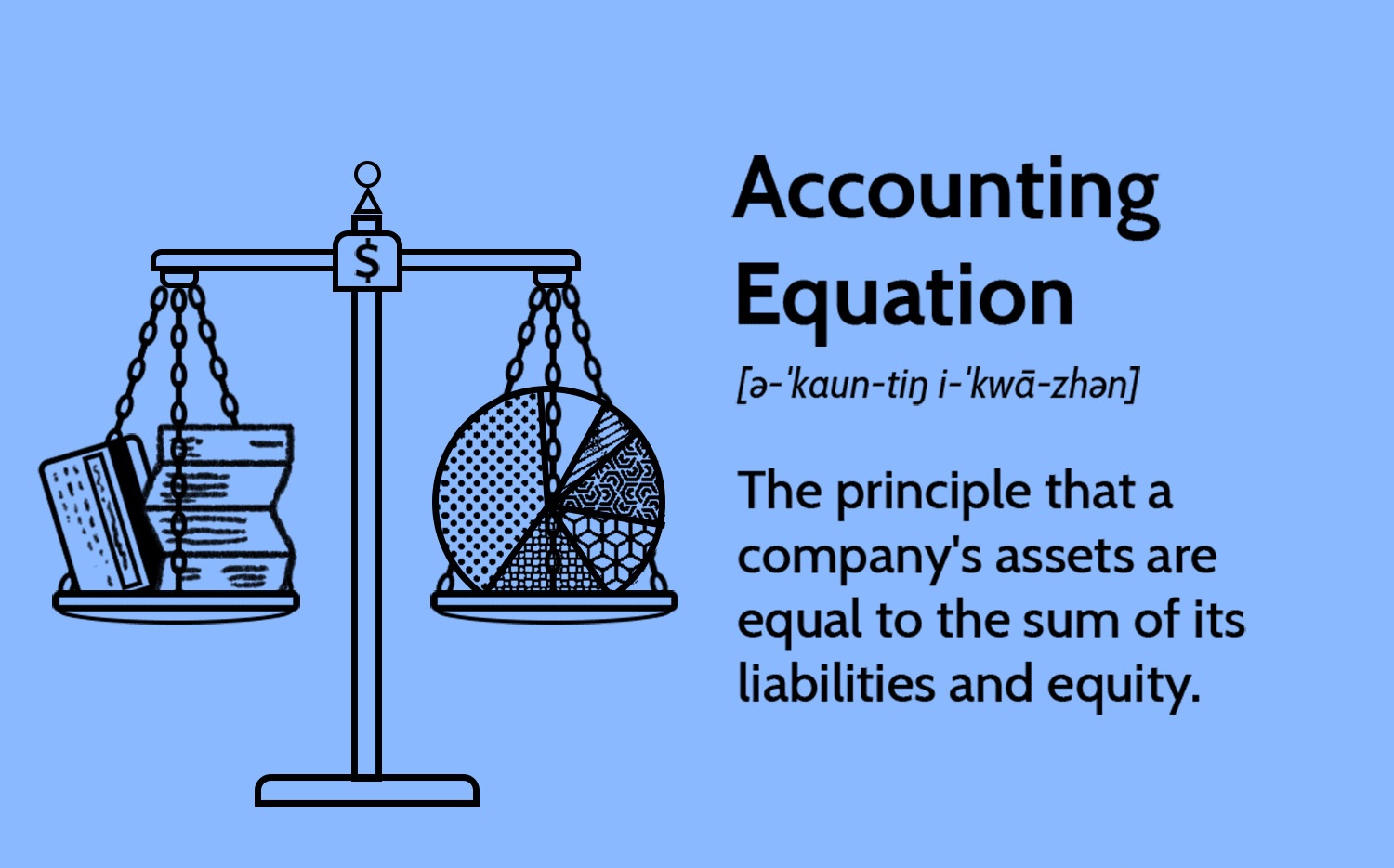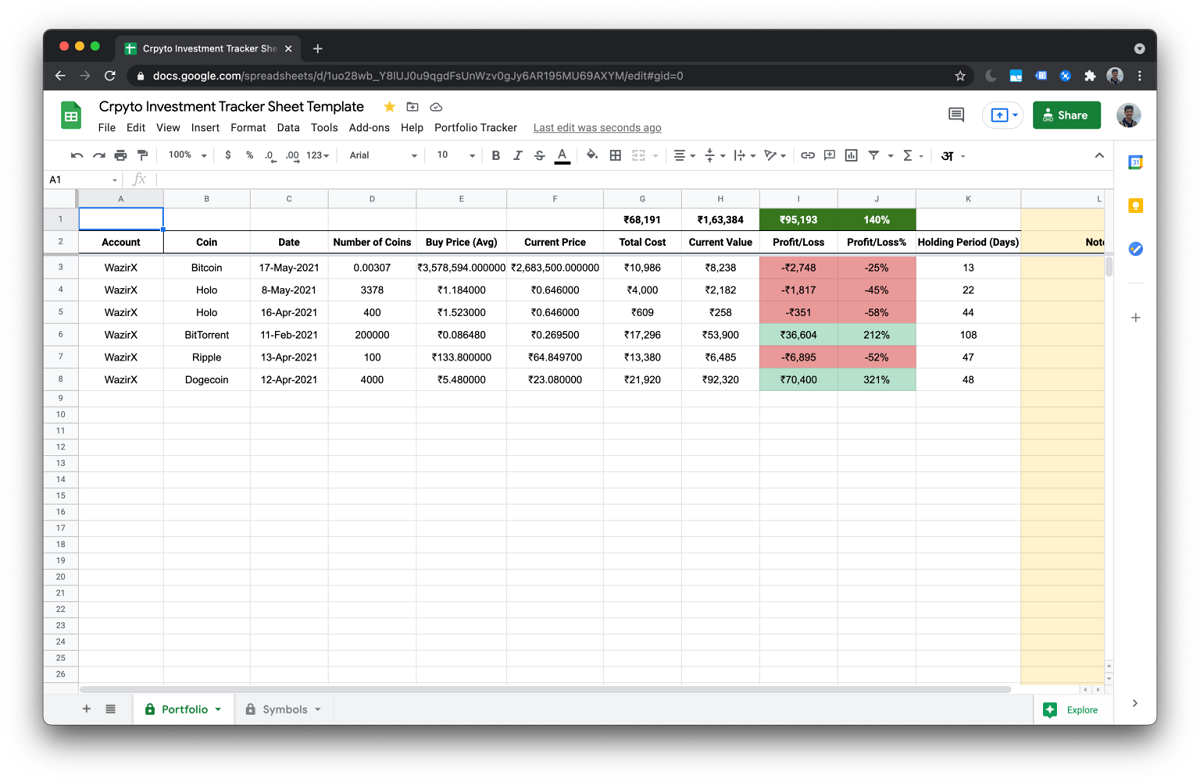Introduction
Welcome to the fascinating world of securities and investments. Whether you are a seasoned investor or just starting out, understanding the concept of securities is essential to grow and diversify your portfolio. Securities play a crucial role in the financial markets, serving as instruments through which individuals and organizations can invest and generate returns on their capital. In this article, we will explore the various types of securities available in the market and delve into the fundamentals of investing in them.
So, what exactly are securities? In simple terms, securities are financial instruments that represent ownership or debt obligations. They are issued by corporations, governments, and other entities to raise capital for various purposes. Securities can be bought and sold in the open market, and their value fluctuates based on supply and demand dynamics.
There are several types of securities, each with its own unique characteristics and potential benefits. The most common types include stocks, bonds, mutual funds, exchange-traded funds (ETFs), derivatives, commodities, and real estate investment trusts (REITs). Let’s take a closer look at each of these:
Stocks: Stocks, also known as equities, represent ownership in a company. When you purchase stocks, you become a shareholder and have the right to participate in the company’s growth and receive dividends. Stocks offer potential capital appreciation and can be bought and sold on stock exchanges.
Bonds: Bonds, on the other hand, are debt securities issued by governments, municipalities, and corporations. When you invest in bonds, you are essentially lending money to the issuer for a fixed period of time and receive periodic interest payments. At maturity, the issuer repays the principal amount. Bonds are generally considered less risky than stocks and provide a steady stream of income.
Mutual Funds: Mutual funds pool money from multiple investors to invest in a diversified portfolio of securities. They are managed by professional fund managers who aim to generate returns based on the fund’s investment objective. Mutual funds offer investors the opportunity to gain exposure to a wide range of securities with varying risk profiles.
Exchange-Traded Funds (ETFs): ETFs are similar to mutual funds but trade on stock exchanges like individual stocks. They track a specific index, sector, or asset class and are designed to provide investors with a cost-effective and convenient way to gain exposure to a specific market segment.
Derivatives: Derivatives are financial contracts whose value is derived from an underlying asset, such as stocks, bonds, commodities, or currencies. They can be used for hedging, speculation, or risk management. Common types of derivatives include options, futures, and swaps.
Commodities: Commodities are physical goods, such as gold, oil, or agricultural products, that are traded in the global market. Investing in commodities can provide diversification and serve as a hedge against inflation and economic uncertainties.
Real Estate Investment Trusts (REITs): REITs are investment vehicles that own, operate, or finance income-generating real estate properties. They offer investors the opportunity to invest in a diversified portfolio of real estate assets without the need to directly own and manage properties themselves.
In addition to these, there are other types of securities and investment options available, such as options, futures, and foreign currencies. Understanding the characteristics and risks associated with each type of security is crucial for making informed investment decisions.
Investing in securities can provide several benefits, including potential capital appreciation, income generation, and diversification. However, it is important to note that investing in securities also involves risks, such as market volatility, economic changes, and company-specific risks. Before investing, it is crucial to evaluate your risk tolerance, investment goals, and time horizon.
In the following sections, we will explore the factors to consider before investing in securities and provide valuable insights on getting started with investing in securities.
What are Securities?
Securities are financial instruments that represent ownership or debt obligations. They are issued by corporations, governments, and other entities to raise capital. These instruments provide individuals and organizations with the opportunity to invest and generate returns on their capital. Securities can be bought and sold in the open market, and their value fluctuates based on supply and demand dynamics.
Securities serve as a means for companies to raise funds for various purposes, such as expanding operations, financing new projects, or paying off existing debt. By issuing securities, companies offer investors the opportunity to participate in their growth and share in their profits.
Ownership Securities: One type of security is ownership securities, which represent ownership in a company. Common ownership securities are stocks, also known as equities. When an individual buys stocks, they become a shareholder and have a claim on the company’s assets and earnings. Shareholders have the right to attend and vote at annual general meetings, as well as the potential to receive dividends if the company distributes profits to its shareholders.
Debt Securities: The other type of security is debt securities, which represent debt obligations. Bonds are the most common type of debt securities. When investors purchase bonds, they are lending money to the issuer, whether it’s a corporation or a government entity. Bonds have a predetermined maturity date and pay periodic interest to bondholders. At maturity, the issuer repays the principal amount invested. Bonds have varying risk levels, with government bonds typically considered less risky than corporate bonds.
In addition to stocks and bonds, there are other types of securities available in the market, such as mutual funds, exchange-traded funds (ETFs), derivatives, commodities, and real estate investment trusts (REITs).
Mutual Funds: Mutual funds pool money from multiple investors to invest in a diversified portfolio of securities. They are managed by professional fund managers who aim to generate returns based on the fund’s investment objective. Investing in mutual funds provides individuals with the opportunity to gain exposure to a diversified portfolio without having to directly manage their investments.
Exchange-Traded Funds (ETFs): ETFs are similar to mutual funds but trade on stock exchanges like individual stocks. ETFs track a specific index, sector, or asset class and allow investors to gain exposure to a particular market segment. ETFs provide flexibility and are traded throughout the trading day.
Derivatives: Derivatives are financial contracts whose value is derived from an underlying asset, such as stocks, bonds, commodities, or currencies. Derivatives can be used for hedging, speculation, or risk management. Common types of derivatives include options, futures, and swaps.
Commodities: Commodities are physical goods, such as gold, oil, or agricultural products, that are traded in the global market. Investors can participate in commodity markets through various investment vehicles like commodity funds or futures contracts. Investing in commodities can provide diversification and serve as a hedge against inflation and economic uncertainties.
Real Estate Investment Trusts (REITs): REITs are investment vehicles that own, operate, or finance income-generating real estate properties. They allow investors to invest in a diversified portfolio of real estate assets without the need to directly own and manage properties themselves. REITs provide an opportunity to participate in the real estate market and receive regular income from rental properties.
Understanding the different types of securities available is essential when it comes to making investment decisions. Each type of security comes with its own set of risks and potential rewards. By diversifying their portfolios and considering their risk tolerance and investment goals, individuals can build a well-rounded investment strategy using a combination of securities.
Types of Securities
The world of securities offers a wide array of options for investors to choose from. Each type of security has its own characteristics, risk profile, and potential return. Understanding the different types of securities can help investors diversify their portfolios and achieve their financial goals. Let’s explore some of the common types of securities:
Stocks: Stocks, also known as equities, represent ownership in a company. When you invest in stocks, you become a shareholder and have the potential to benefit from the company’s growth and profitability. Stocks offer potential capital appreciation and the opportunity to receive dividends.
Bonds: Bonds are debt securities issued by governments, municipalities, and corporations. When you buy a bond, you are essentially lending money to the issuer for a fixed period of time. In return, you receive periodic interest payments (coupons) and the principal amount is repaid at maturity. Bonds are generally considered less risky than stocks and provide a steady stream of income.
Mutual Funds: Mutual funds pool money from multiple investors to invest in a diversified portfolio of securities. They are managed by professional fund managers who make investment decisions on behalf of the investors. Mutual funds offer investors the opportunity to gain exposure to a wide range of securities with varying risk profiles.
Exchange-Traded Funds (ETFs): ETFs are similar to mutual funds but trade on stock exchanges like individual stocks. They track a specific index, sector, or asset class and provide investors with a cost-effective and convenient way to gain exposure to a particular market segment. ETFs offer flexibility and can be bought and sold throughout the trading day.
Derivatives: Derivatives are financial contracts whose value is derived from an underlying asset. They can be used for hedging, speculation, or risk management. Options, futures, and swaps are common types of derivatives that allow investors to engage in advanced trading strategies.
Commodities: Commodities are physical goods, such as gold, oil, or agricultural products, that are traded in the global market. Investing in commodities can provide diversification and serve as a hedge against inflation and economic uncertainties. Investors can participate in commodity markets through various investment vehicles like commodity funds or futures contracts.
Real Estate Investment Trusts (REITs): REITs are investment vehicles that own, operate, or finance income-generating real estate properties. They allow investors to invest in a diversified portfolio of real estate assets without the need to directly own and manage properties themselves. REITs provide an opportunity to participate in the real estate market and receive regular income from rental properties.
In addition to these common types of securities, there are other options available in the market, such as options, futures, foreign currencies, and even digital assets like cryptocurrencies. These alternative securities offer unique opportunities and risks for investors.
It’s important for investors to consider their risk tolerance, investment goals, and time horizons when choosing securities. Diversifying the portfolio by investing in different types of securities can help spread the risk and maximize potential returns. It’s also advisable to conduct thorough research, seek professional advice, and stay informed about market trends and developments to make well-informed investment decisions.
Stocks
Stocks are one of the most well-known types of securities available in the financial markets. When you invest in stocks, you become a shareholder or part-owner of a company. Stocks represent ownership in a company and provide investors with the opportunity to benefit from the company’s growth and profitability.
There are two main types of stocks: common stocks and preferred stocks. Common stocks give shareholders voting rights in the company’s decision-making processes and offer the potential for capital appreciation. Preferred stocks, on the other hand, provide shareholders with a fixed dividend payment and have a higher claim on the company’s assets in the event of bankruptcy.
Investing in stocks can offer several benefits. Firstly, stocks have the potential for long-term capital appreciation. As the company’s value increases over time, the value of its stocks may also rise, allowing investors to sell their shares at higher prices and generate profits. Secondly, stocks may provide regular income in the form of dividends. While not all companies pay dividends, those that do offer shareholders a portion of their profits as a reward for their investment. Dividends can be a valuable source of passive income for investors.
However, it’s important to note that investing in stocks also carries risks. Stock prices can be volatile and may fluctuate based on various factors, including market conditions, economic events, and individual company performance. Additionally, there is always the risk of a company performing poorly or even going bankrupt, which can lead to a decline in the value of the stocks.
When investing in stocks, it’s crucial to conduct thorough research and analysis. Investors should consider factors such as the company’s financial health, management team, competitive position, and industry trends. By understanding the fundamentals of the company and its prospects for growth, investors can make more informed investment decisions.
Investors can buy and sell stocks through stock exchanges. Stock exchanges provide a platform for buyers and sellers to trade stocks, and the prices of stocks are determined by the supply and demand in the market. Some well-known stock exchanges include the New York Stock Exchange (NYSE), Nasdaq, and London Stock Exchange (LSE).
One popular investment strategy when it comes to stocks is diversification. Diversification involves spreading investments across different stocks and sectors to reduce risk. By investing in a variety of companies, investors can potentially mitigate losses from any single stock’s poor performance. Diversification can be achieved through individual stock purchases or through investing in mutual funds or exchange-traded funds (ETFs) that hold a diversified portfolio of stocks.
Overall, stocks offer investors the opportunity to participate in the growth and profitability of individual companies. However, it’s important to assess one’s risk tolerance, investment goals, and time horizon before investing in stocks. With proper research, analysis, and a well-diversified portfolio, stocks can be a valuable asset class for long-term investors seeking potential capital appreciation and income generation.
Bonds
Bonds are a type of security that represents debt obligations. When you invest in bonds, you are essentially lending money to the issuer, whether it’s a government, municipality, or corporation. Unlike stocks, which offer ownership in a company, bonds provide investors with a fixed income stream in the form of periodic interest payments.
One of the key features of bonds is their fixed maturity date. Bonds have a predetermined lifespan, known as the term or tenor, at the end of which the issuer repays the principal amount to the bondholders. During the term, bondholders receive regular interest payments, known as coupons, which are usually paid annually, semi-annually, or quarterly based on the bond’s specifications.
Investing in bonds can offer several advantages. Firstly, bonds provide a steady stream of income for investors. The fixed interest payments can be an attractive feature for those looking to generate regular income, such as retirees or individuals seeking stability in their investment portfolio. Secondly, bonds are generally considered less volatile than stocks, making them a potentially more conservative investment option. Additionally, bonds can be a useful diversification tool, as they may perform differently from stocks during market downturns.
When it comes to bonds, investors should be mindful of their credit quality. The credit rating of a bond reflects the issuer’s ability to fulfill its debt obligations. Bonds issued by governments or companies with strong credit ratings are generally considered lower risk, while those with lower credit ratings may carry higher risks and potentially offer higher yields to compensate for the increased risk. It’s important to assess the creditworthiness of the issuer before investing in bonds.
In addition to credit risk, bonds are also subject to interest rate risk. Bond prices and interest rates have an inverse relationship. When interest rates rise, existing bonds with lower interest rates become less attractive, causing their prices to fall. On the other hand, when interest rates decrease, existing bonds become more valuable, leading to price increases. Investors should be aware of interest rate movements and their potential impact on bond prices.
There are different types of bonds available in the market. Some common types include government bonds, corporate bonds, municipal bonds, and convertible bonds. Government bonds are issued by national governments and are considered relatively safer due to the backing of the government’s ability to generate revenue through taxes. Corporate bonds are issued by corporations to raise capital, and their risk levels vary depending on the creditworthiness of the company. Municipal bonds are issued by state or local governments and are used to finance infrastructure projects or other public initiatives. Convertible bonds give bondholders the option to convert their bonds into a predetermined number of shares of the issuer’s common stock.
Investors can buy and sell bonds through various channels, including financial institutions, brokerage firms, or directly from the issuer. The bond market offers opportunities for individual investors as well as institutional investors, providing liquidity and potential diversification benefits.
Overall, bonds can be an essential component of a well-diversified investment portfolio, offering investors a reliable stream of income and potential capital preservation. Understanding the characteristics and risks associated with bonds, conducting proper research, and assessing one’s risk tolerance and investment goals are essential for making informed investment decisions in the bond market.
Mutual Funds
Mutual funds are investment vehicles that pool money from multiple investors to invest in a diversified portfolio of securities. They are managed by professional fund managers who make investment decisions on behalf of the investors. Mutual funds offer individuals the opportunity to gain exposure to a wide range of securities without the need to directly manage their investments.
One of the key advantages of mutual funds is diversification. By pooling money from multiple investors, mutual funds can invest in a variety of asset classes, such as stocks, bonds, and other financial instruments. This diversification helps spread the risk across different securities and can potentially reduce the impact of any single security’s poor performance on the overall investment portfolio.
Mutual funds are available in different types, each with its own investment objective and focus. For example, equity funds primarily invest in stocks and are suitable for investors seeking long-term capital appreciation. Bond funds predominantly invest in bonds and are suitable for investors looking for regular income and lower risk. Balanced funds hold a mix of stocks and bonds to provide a balance between growth and income.
When considering investing in mutual funds, it’s important to understand the fund’s investment objectives, the fees and expenses associated with the fund, and its past performance. Mutual funds charge fees, including management fees and expense ratios, which cover the costs of managing and operating the fund. Investors should carefully review the fees and expenses to ensure they align with their investment goals and risk tolerance.
One key aspect of mutual funds is their liquidity. Investors can typically buy or sell mutual fund shares on any business day at the fund’s net asset value (NAV), which is calculated based on the total value of the fund’s assets minus its liabilities. This liquidity feature provides investors with ease of access to their investments and the ability to convert their mutual fund shares into cash when needed.
Mutual funds offer different share classes, each with its own fee structure. These classes may include A-class shares, B-class shares, and C-class shares. Each class may have variations in sales charges and ongoing fees, so investors should carefully evaluate and select the class that best fits their investment objectives and preferences.
Investing in mutual funds requires consideration of various factors, including your investment goals, risk tolerance, and time horizon. It’s important to assess the fund’s historical performance, the experience and track record of the fund manager, and the fund’s investment strategy before making an investment decision.
Mutual funds provide access to professional investment management and allow individual investors to gain exposure to a well-diversified portfolio of securities. By investing in mutual funds, individuals can tap into the expertise of fund managers, benefit from diversification, and potentially achieve their long-term investment objectives.
Exchange-Traded Funds (ETFs)
Exchange-Traded Funds (ETFs) are investment funds that trade on stock exchanges, similar to individual stocks. They are designed to track the performance of a specific index, sector, or asset class. ETFs offer investors a cost-effective and convenient way to gain exposure to a particular market segment or investment strategy.
One of the key advantages of ETFs is their flexibility and tradability. ETFs can be bought and sold throughout the trading day, providing investors with the ability to enter or exit positions at any time. This intraday trading feature distinguishes ETFs from mutual funds, which are priced and traded at the end of the trading day. Investors can take advantage of market opportunities or adjust their portfolios in response to changing market conditions with greater ease.
ETFs are available in various types, including equity ETFs, bond ETFs, commodity ETFs, and sector-specific ETFs. Equity ETFs track the performance of a specific stock market index, such as the S&P 500 or the NASDAQ-100. Bond ETFs focus on fixed-income securities and offer exposure to various types of bonds, such as government bonds or corporate bonds. Commodity ETFs track the price of commodities like gold, oil, or agricultural products. Sector-specific ETFs concentrate on specific sectors of the economy, such as technology, healthcare, or energy.
In addition to providing broad market exposure, ETFs can also offer targeted investment strategies. For example, some ETFs may aim to replicate the performance of a factor, such as low volatility or dividend yield. There are also actively managed ETFs where a portfolio manager actively selects and manages the securities held within the fund. These types of ETFs provide investors with a range of investment options catering to their specific investment goals and strategies.
ETFs offer several benefits to investors. Firstly, they provide instant diversification by holding a portfolio of securities within a single fund. This diversification helps reduce the risk associated with individual holdings. Secondly, ETFs typically have lower expense ratios compared to actively managed mutual funds, making them a cost-effective investment option. Furthermore, ETFs provide transparency as their holdings are disclosed daily, allowing investors to see the underlying securities in the fund.
To invest in ETFs, investors can buy and sell shares through brokerage accounts, just like trading individual stocks. ETFs are traded at market prices, which can be different from their net asset value (NAV). The market price of an ETF may be influenced by factors such as supply and demand dynamics, market sentiment, and trading activity.
Before investing in ETFs, it’s important to consider factors such as the management fees, liquidity, and the tracking quality of the ETF. Tracking quality refers to how closely the ETF’s performance aligns with the performance of its underlying index. Investors should also evaluate the specific investment objective, strategy, and historical performance of the ETF to ensure it aligns with their investment goals.
Exchange-Traded Funds have gained popularity among investors due to their flexibility, diversification, and transparency. They provide an efficient way to gain exposure to different asset classes or investment strategies, offering individuals the opportunity to build a well-rounded investment portfolio.
Derivatives
Derivatives are financial contracts whose value is derived from an underlying asset, such as stocks, bonds, commodities, or currencies. They serve as risk management tools, enabling investors to hedge against price fluctuations, speculate on future price movements, or gain exposure to a specific asset class without directly owning the underlying asset.
There are different types of derivatives, with some of the most commonly traded ones being options, futures, and swaps.
Options: Options give the holder the right, but not the obligation, to buy or sell an underlying asset at a predetermined price within a specified period. There are two types of options: call options, which give the holder the right to buy the underlying asset, and put options, which give the holder the right to sell the underlying asset. Options provide flexibility and can be used for various strategies, such as hedging against potential losses or speculating on price movements.
Futures: Futures contracts obligate the buyer and seller to buy or sell an underlying asset at a predetermined price on a specified future date. Futures are standardized contracts traded on regulated exchanges and are primarily used for hedging purposes. They allow businesses and investors to lock in prices for commodities, currencies, or financial instruments, protecting them from adverse price movements.
Swaps: Swaps are agreements between parties to exchange cash flows based on predetermined conditions. Common types of swaps include interest rate swaps, currency swaps, and commodity swaps. Swaps are typically used to manage risks associated with interest rates, currency fluctuations, or commodity price movements.
Derivatives offer several benefits to investors. Firstly, they provide opportunities for hedging. Investors can protect their portfolios against potential losses by using derivatives to offset the negative impact of adverse price movements. Secondly, derivatives enable investors to speculate on price movements and potentially generate profits. By taking positions on anticipated price changes, investors can benefit from market trends and volatility. Lastly, derivatives offer opportunities for arbitrage, allowing investors to exploit price discrepancies between different markets or instruments for profit.
However, trading derivatives also involves risks. Derivatives can be complex instruments, and incorrect predictions or market volatility can lead to significant losses. Investors should carefully understand the risks associated with derivatives and consider their risk tolerance and investment goals before engaging in derivatives trading.
Derivatives are traded on organized exchanges or over-the-counter (OTC) markets. Exchanges provide a centralized platform with standardized contracts, transparent pricing, and regulated trading. OTC derivatives, on the other hand, are customized contracts negotiated between two parties, offering flexibility but also increased counterparty risks.
Due to the complexity of derivatives, it is advisable for individuals to seek professional advice or education before venturing into derivative trading. Understanding the mechanics, pricing models, and strategies associated with derivatives is crucial for making informed investment decisions.
Overall, derivatives play a vital role in financial markets, enabling investors to manage risks, speculate on price movements, and diversify their portfolios. By carefully understanding the nature of derivatives and conducting proper risk management, investors can utilize derivatives as valuable tools to enhance their investment strategies.
Commodities
Commodities are physical goods, such as gold, oil, natural gas, agricultural products, or precious metals, that are traded in the global market. Investing in commodities offers individuals the opportunity to diversify their portfolios and potentially benefit from price movements in these essential raw materials.
One of the key reasons investors consider commodities as an asset class is their potential as a hedge against inflation. As the prices of goods and services rise, the value of commodities may also increase, providing a potential store of value. Commodities are also influenced by supply and demand dynamics, global events, and economic factors, making them potentially resistant to the volatility of other asset classes, such as stocks or bonds.
Investors can participate in commodity markets through various investment vehicles. These include investing directly in physical commodities, trading commodity futures contracts, or investing in commodity-focused exchange-traded funds (ETFs).
Physical Commodities: Investing directly in physical commodities involves purchasing and holding the actual physical goods. For example, investors can buy gold bullion, invest in farmland or agricultural products, or purchase barrels of oil. This type of investment requires storage, maintenance, and the ability to handle the logistics of acquiring and selling physical commodities.
Commodity Futures: Commodity futures contracts reflect the agreement to buy or sell a predetermined amount of a specific commodity at a predetermined price on a specified date in the future. Futures contracts allow investors to speculate on the future direction of commodity prices and can provide opportunities for hedging against potential price fluctuations. Investing in commodity futures requires knowledge of market dynamics, understanding of contract specifications, and careful risk management.
Commodity-focused ETFs: Commodity-focused ETFs hold a diversified portfolio of commodity-related securities. These can include futures contracts, shares of commodity-related companies, or even physical commodities. ETFs offer investors a more convenient and accessible way to gain exposure to a diversified basket of commodities without the need for direct ownership or trading of individual contracts.
When investing in commodities, it’s important to consider some key factors. Firstly, commodities can be subject to price volatility due to factors such as weather conditions, geopolitical events, or changes in supply and demand dynamics. Investors should carefully assess their risk tolerance and investment goals before investing in commodities.
Secondly, investing in commodities may require specialized knowledge or access to market information. Understanding the specific characteristics of each commodity, including demand drivers, storage costs, and seasonal patterns, can enhance investment decision-making. Additionally, factors such as transportation, regulations, and geopolitical risks can impact the performance of commodity investments.
Lastly, commodities as an asset class may not always move in sync with traditional financial markets. Their performance may be influenced by different factors, making them potentially uncorrelated with other investments. This unique characteristic can provide diversification benefits to a well-balanced investment portfolio.
Investing in commodities can provide individuals with the opportunity to diversify their portfolios, protect against inflation, and potentially benefit from price movements in essential goods. However, investors should carefully assess the risks associated with commodities, conduct thorough research, and consider their risk tolerance and investment goals before allocating assets to this asset class.
Real Estate Investment Trusts (REITs)
Real Estate Investment Trusts (REITs) are investment vehicles that own, operate, or finance income-generating real estate properties. REITs provide individuals with the opportunity to invest in a diversified portfolio of real estate assets without the need to directly own and manage properties themselves.
REITs can invest in various types of real estate, including residential properties, commercial properties, office buildings, shopping centers, hotels, or industrial properties. By investing in REITs, individuals can gain exposure to different sectors and locations within the real estate market, which can provide diversification benefits to their investment portfolios.
One of the key advantages of investing in REITs is the potential for regular income. As a requirement, REITs distribute a significant portion of their taxable income to shareholders in the form of dividends. Investors can benefit from a reliable income stream from the rental income generated by the properties owned by the REITs. This income can be particularly attractive for income-oriented investors, such as retirees, seeking consistent cash flow.
Furthermore, REITs offer the potential for capital appreciation. As real estate properties within the REITs portfolio appreciate in value over time, the value of the REITs’ shares may also increase. This provides investors with the opportunity to generate returns through both income and capital appreciation.
Investing in REITs also offers liquidity advantages. REITs are traded publicly on stock exchanges, allowing investors to buy and sell shares at market prices. This provides investors with flexibility and ease of access to their investments, as opposed to owning physical properties, which can be relatively illiquid.
It’s important to note that investing in REITs also carries risks. The performance of REITs can be influenced by various factors, including changes in the real estate market, interest rate movements, and economic conditions. Additionally, specific risks associated with the types of real estate assets held by the REITs, such as vacancy rates, rental income fluctuations, or regulatory changes, can impact their performance.
When considering investing in REITs, investors should evaluate the management team’s experience and track record, the quality and location of the properties owned by the REITs, the dividend distribution history, and the overall financial health of the REITs. Conducting thorough research and analysis is necessary to make informed investment decisions.
REITs are regulated investment vehicles that must meet specific requirements to qualify for tax advantages. These requirements typically include distributing a significant portion of their taxable income as dividends to shareholders and investing a substantial portion of their assets in real estate properties. Regulatory oversight ensures transparency and accountability in the operation and reporting of REITs.
Investing in REITs provides individuals with the opportunity to access the real estate market and benefit from income generation and potential capital appreciation. By investing in a diversified portfolio of real estate assets through REITs, investors can gain exposure to the real estate market without the need for significant capital or active property management. However, investors should carefully consider their risk tolerance, investment goals, and conduct due diligence before investing in REITs.
Other Types of Securities
In addition to stocks, bonds, mutual funds, ETFs, derivatives, commodities, and REITs, there are other types of securities available in the market. These securities offer unique investment opportunities and cater to specific investment preferences or strategies.
Options: Options are derivative securities that give the holder the right, but not the obligation, to buy or sell an underlying asset at a predetermined price within a specific time period. Options can be used for risk management, speculation, or income generation through option writing strategies.
Foreign Currencies: Foreign currencies are traded in the foreign exchange (forex) market, allowing investors to participate in currency trading. Investors can invest directly in foreign currencies or trade currency pairs through forex trading platforms. Investing in foreign currencies provides exposure to global markets and potential opportunities for profit from currency value fluctuations.
Preferred Stocks: Preferred stocks are a type of equity security that have characteristics of both stocks and bonds. Preferred shareholders have a higher claim on the company’s assets compared to common shareholders and receive a fixed dividend payment. Preferred stocks generally offer more stable income compared to common stocks.
Structured Products: Structured products combine various financial instruments to create a hybrid security. These products are designed to meet specific investment objectives or provide a customized risk-return profile. Structured products can be linked to underlying assets, indices, or economic variables and may include features such as principal protection or enhanced returns.
Unit Investment Trusts (UITs): UITs are investment companies that offer shares or units that represent a fixed portfolio of securities. UITs have a fixed termination date, and the portfolio is passively managed to track a specific index or strategy. Investors in UITs receive income from dividends and interest earned by the trust’s underlying assets.
Convertible Securities: Convertible securities, such as convertible bonds or preferred stocks, allow holders to convert their securities into a predetermined number of common shares of the issuing company. The conversion feature gives investors the potential to benefit from increases in the company’s stock price while still having the security of fixed income or preferred dividend payments.
These are just a few examples of other types of securities available in the market. Each of these securities has its own unique characteristics, risks, and potential rewards. It is essential for investors to thoroughly research and understand each type of security before making investment decisions, taking into account their risk tolerance, investment goals, and time horizon.
Investing in securities requires careful consideration and analysis to ensure alignment with one’s investment objectives. By diversifying investments across different types of securities, investors can build a well-rounded portfolio tailored to their financial goals and risk preferences.
Investing in Securities
Investing in securities provides individuals with the opportunity to grow their wealth and achieve their financial goals. Whether it’s stocks, bonds, mutual funds, ETFs, derivatives, commodities, or other types of securities, investing can offer potential returns on capital and various investment strategies to suit individual preferences.
When considering investing in securities, it’s important to have a clear understanding of your investment goals. Are you looking for long-term capital appreciation, regular income, or a combination of both? Defining your investment goals will help determine which types of securities align with your objectives.
Investors should also evaluate their risk tolerance. Different securities carry different levels of risk. Some securities, such as stocks, may offer higher potential returns but are also subject to greater volatility. On the other hand, bonds may provide relatively more stability but lower potential returns. Assessing your risk tolerance will help you determine the appropriate mix of securities for your investment portfolio.
Another crucial consideration is asset allocation. Diversification is key to managing risk and optimizing returns. By spreading investments across different types of securities, sectors, and geographic regions, investors reduce their exposure to any single asset or market. This can help minimize potential losses. Developing a well-diversified portfolio provides a balance between risk and potential rewards.
Investigating and researching the securities you decide to invest in is essential. Study the historical performance, financial health, and management track record of companies or funds. Consider factors such as industry trends, competition, and economic conditions that may impact the performance of the securities. Staying informed through financial news, market reports, and expert analysis can help you make informed investment decisions.
It’s also important to consider the costs associated with investing. Different securities have different expense structures, including management fees, transaction fees, and hidden costs. Assessing these costs and understanding how they can impact your overall returns is crucial. Be mindful of brokerage fees, commissions, and any other charges associated with buying and selling securities.
Lastly, monitoring and reviewing your investment portfolio is an ongoing process. Keep track of how your securities are performing and make adjustments as necessary. Regularly review your portfolio’s allocation to ensure it continues to align with your investment goals and risk tolerance. Rebalance the portfolio periodically to maintain the desired asset allocation and take advantage of investment opportunities.
Investing in securities can be an exciting and rewarding journey, but it requires diligence, research, and analysis. By understanding your goals, managing risk through diversification, staying informed, and regularly reviewing your portfolio, you can set yourself on a path towards achieving your financial objectives.
Benefits of Investing in Securities
Investing in securities offers individuals various benefits that can help them achieve their financial goals and build long-term wealth. Whether investing in stocks, bonds, mutual funds, ETFs, derivatives, commodities, or other types of securities, here are some key advantages:
Potential for Capital Appreciation: Investing in securities provides the opportunity for capital appreciation. Over time, the value of certain securities, such as stocks, may increase, allowing investors to sell their investments at a higher price than what they initially paid. This potential for growth can help individuals accumulate wealth and meet their long-term financial objectives.
Income Generation: Many securities, such as bonds and dividend-paying stocks, offer regular income generation. Bondholders receive interest payments, while shareholders of dividend-paying stocks can receive dividends from the profits of the company. This income can provide a consistent cash flow, supplement other sources of income, or support individuals during retirement.
Diversification: Investing in securities allows for diversification, which helps spread the risk across different asset classes, sectors, and geographic regions. Holding a diversified portfolio can minimize the impact of poor performance in any single security, providing a level of protection against market volatility. Diversification can potentially enhance returns and reduce the overall risk of the investment portfolio.
Liquidity: Many securities, such as stocks and ETFs, are traded on organized exchanges, providing investors with the ability to buy or sell their investments at market prices. This liquidity allows for quick access to funds when needed, providing flexibility and the ability to take advantage of investment opportunities or adjust one’s portfolio based on changing financial circumstances.
Professional Management: Certain securities, such as mutual funds or ETFs, are managed by professional fund managers who make investment decisions on behalf of investors. These managers use their expertise and research to select and manage a diversified portfolio of securities. This professional management can help investors save time and effort in researching and monitoring individual securities.
Accessibility: Investing in securities has become increasingly accessible to individuals with the advent of online brokerage platforms and investment accounts. Investors can easily open accounts, conduct research, and place trades with a few clicks of a mouse or taps on a smartphone. This accessibility allows individuals to take control of their investments and participate in the financial markets.
Tax Advantages: Some securities, such as certain types of bonds or REITs, may offer tax advantages to investors. For example, municipal bonds may provide tax-exempt interest income, while REITs are required to distribute a substantial portion of their taxable income to shareholders, resulting in potential tax-advantaged dividend income.
Investing in securities carries risks, and it’s important to consider factors such as market volatility, economic conditions, and individual company performance. However, by carefully analyzing investment options, diversifying portfolios, and staying informed about the market, individuals can potentially capitalize on the benefits offered by investing in securities to grow their wealth and achieve their financial objectives.
Risks of Investing in Securities
Investing in securities offers individuals the potential to grow their wealth, but it is important to be aware of the risks involved. Understanding and managing these risks is crucial for making informed investment decisions and protecting your financial well-being. Here are some common risks associated with investing in securities:
Market Volatility: Securities, especially stocks and ETFs, can be subject to significant price fluctuations due to market conditions, economic events, or changes in investor sentiment. Market volatility can lead to sudden declines in the value of investments, and investors may experience short-term losses or struggle to achieve desired returns.
Loss of Capital: Investments in securities carry the risk of loss of capital. The value of securities, such as stocks or bonds, can decline for various reasons, including poor company performance, changes in industry dynamics, or economic downturns. It is possible for investors to lose some or even all of their initial investment.
Company-Specific Risk: Investing in individual stocks exposes investors to company-specific risks. Factors such as poor financial performance, mismanagement, legal issues, or changes in industry trends can negatively impact the value of the stock. Company-specific risks can lead to significant price declines or even bankruptcy, resulting in losses for investors.
Interest Rate Risk: Bonds and other fixed-income securities are susceptible to interest rate risk. When interest rates rise, the value of existing bonds can decline, as newly issued bonds with higher coupon rates become more attractive. Investors holding bonds may face challenges selling them at their original purchase price or may experience a decrease in income from interest payments if they hold the bonds until maturity.
Uncertain Income Potential: The income generated from securities, such as dividends or interest payments, is not guaranteed. Companies may reduce or eliminate dividends, or bonds may default on interest payments. Investing in securities that offer income potential involves risks associated with the financial health and ongoing operations of the issuer.
Liquidity Risk: Certain securities may have limited liquidity, making it difficult to buy or sell shares at desired prices. This can become a challenge when investors need to access their funds quickly or face unfavorable market conditions. Illiquid securities may also result in wider bid-ask spreads, potentially impacting the overall return on investment.
Systemic Risks: Systemic risks are risks that affect the entire financial system or multiple securities markets. Examples include economic recessions, political instability, natural disasters, or global financial crises. These risks can have far-reaching consequences, impacting the value and performance of various securities across different asset classes.
It is important for investors to carefully assess their risk tolerance, investment goals, and time horizon before investing in securities. Diversification across different securities, sectors, and geographical regions can help mitigate specific risks associated with individual investments. Conducting thorough research, staying informed about the market and economic trends, and seeking professional advice when needed can also contribute to successful risk management.
Investing in securities involves various risks, and it is crucial for individuals to understand and accept these risks as part of the investment process. By being aware of the potential downside and employing prudent risk management strategies, investors can make informed decisions and strive to achieve their financial objectives over the long term.
Factors to Consider Before Investing in Securities
Investing in securities can be a valuable way to grow your wealth, but it’s important to carefully consider several factors before making investment decisions. By evaluating these factors, you can make informed choices that align with your financial goals, risk tolerance, and investment timeframe. Here are some key factors to consider:
Investment Objectives: Determine your investment goals and objectives. Are you looking for long-term capital appreciation, regular income, or a combination of both? Having a clear understanding of your objectives will help guide your investment strategy and the types of securities you choose.
Risk Tolerance: Assess your risk tolerance, which refers to how comfortable you are with fluctuations in the value of your investments. Consider your financial situation, time horizon, and emotional ability to tolerate potential losses. Different securities carry different levels of risk, so it’s important to select investments that align with your risk tolerance.
Asset Allocation: Decide on the optimal asset allocation for your investment portfolio. Diversify your investments across different types of securities, sectors, and geographic regions to spread risk. Understand the potential risk and return characteristics of each asset class and determine the appropriate mix based on your investment objectives and risk tolerance.
Time Horizon: Consider your investment timeframe. The length of time you can stay invested can influence your investment choices. If you have a longer time horizon, you may be able to tolerate more risk and potentially benefit from the higher growth potential of certain securities. For shorter timeframes, conservative investments may be more suitable to protect capital.
Financial Resources: Evaluate your financial resources and investment capital. Consider the amount of money you can comfortably invest and the impact of potential losses on your overall financial situation. Maintain an emergency fund and avoid investing funds that may be needed for immediate expenses.
Research and Due Diligence: Conduct thorough research and due diligence on the securities you are considering. Investigate the financial health, performance history, and prospects of the companies or funds you are interested in. Stay informed about market trends, economic conditions, and regulatory changes that may affect your investments.
Costs and Fees: Understand the costs associated with investing in securities. Different types of securities may have various fees, such as management fees, transaction costs, or expense ratios. Consider the impact of these costs on your investment returns and choose securities with cost structures that align with your investment strategy.
Professional Advice: Consider seeking professional advice from financial advisors or investment professionals. They can provide guidance, expertise, and insights tailored to your specific financial situation and investment goals. Professional advice can help you navigate the complex world of securities and make informed decisions.
It’s important to remember that investing in securities involves risk, and there are no guaranteed returns. Regularly review your investment portfolio, monitor its performance, and make adjustments as needed. Remember that investment decisions should be based on your individual circumstances and goals, and what may be suitable for one person may not be appropriate for another.
By carefully considering these factors before investing in securities, you can create a strategic investment plan that aligns with your objectives and risk tolerance. Taking the time to assess your financial situation, conduct thorough research, and seek professional advice as needed can contribute to a successful investment journey.
How to Get Started with Investing in Securities
Getting started with investing in securities may seem overwhelming, but with the right approach, it can be a rewarding journey. Here are some steps to help you begin your investment journey:
1. Determine Your Financial Goals: Clarify your financial goals and objectives. Are you investing for retirement, buying a home, or funding your child’s education? Defining your goals will provide direction and help you choose appropriate investment strategies.
2. Assess Your Risk Tolerance: Understand your risk tolerance and how comfortable you are with potential investment losses. Assess your financial situation, emotional capacity for risk, and time horizon. This will guide you in selecting securities that align with your risk profile.
3. Educate Yourself: Take the time to educate yourself about different types of securities. Learn about stocks, bonds, mutual funds, ETFs, and other investment options. Understand their characteristics, risks, and potential returns. Use reputable financial sources, books, and online resources to enhance your knowledge.
4. Establish an Emergency Fund: Before investing, build an emergency fund that covers at least three to six months of living expenses. This will provide a safety net in case of unexpected financial emergencies, ensuring that your investments are not prematurely liquidated.
5. Set a Budget: Evaluate your cash flow and set a budget that allows you to allocate funds for investing regularly. Designate a specific amount or percentage of your income for investments. Consistent contributions over time can help you benefit from the power of compounding.
6. Determine Your Asset Allocation: Based on your financial goals, risk tolerance, and time horizon, decide on an appropriate asset allocation. Consider diversifying your investments across different asset classes, such as stocks, bonds, and cash equivalents, to spread risk and potentially optimize returns.
7. Open an Investment Account: Choose a reputable brokerage firm or financial institution to open an investment account. Compare fees, commissions, and available investment options. Make sure the platform provides the tools and resources you need to make informed decisions.
8. Start Small and Research: Begin by investing a small amount in order to become familiar with the investing process and gain confidence. Research different securities, evaluate their performance history, and assess their fit within your asset allocation strategy. Look for companies or funds with strong fundamentals and track records of solid performance.
9. Monitor Your Investments: Regularly review the performance of your investments. Stay informed about market trends, economic news, and company updates. Evaluate your portfolio’s asset allocation, make adjustments if necessary, and rebalance periodically to maintain your desired risk level.
10. Seek Professional Advice if Needed: If you feel overwhelmed or lack confidence in making investment decisions, consider seeking guidance from a financial advisor. A professional can provide tailored advice based on your unique financial circumstances and goals.
11. Be Patient and Stay Disciplined: Remember that investing is a long-term endeavor. Avoid reacting to short-term market fluctuations and focus on your long-term goals. Stay disciplined and consistent in your investment approach, and avoid making impulsive decisions based on emotions or unverified information.
Investing in securities requires diligence, knowledge, and a long-term perspective. By following these steps, you can lay a solid foundation for your investment journey and begin building wealth over time.
Conclusion
Investing in securities can be a powerful tool for growing wealth and achieving financial goals. Whether you choose to invest in stocks, bonds, mutual funds, ETFs, derivatives, commodities, or other types of securities, it’s essential to approach investing with knowledge, research, and careful consideration of your financial situation and objectives.
Securities offer various benefits, including the potential for capital appreciation, regular income generation, diversification, liquidity, and professional management. However, investing in securities also carries risks, such as market volatility, potential losses, company-specific risks, interest rate risk, and liquidity challenges.
Before investing in securities, it’s important to define your investment goals and assess your risk tolerance. Consider factors such as asset allocation, time horizons, financial resources, and the costs associated with investing. Conduct thorough research, educate yourself about different securities, and stay informed about market trends and economic conditions.
Diversification, periodic portfolio review, and adjustment are key to successful investing. Monitoring your investments, staying disciplined, and seeking professional advice if needed can help you navigate the investment landscape and make well-informed decisions.
Remember, investing in securities is a long-term endeavor. It requires patience, discipline, and a focus on your goals. By carefully considering the factors discussed and developing a solid investment plan, you can set yourself on the path towards growing your wealth, achieving financial independence, and realizing your aspirations.

























